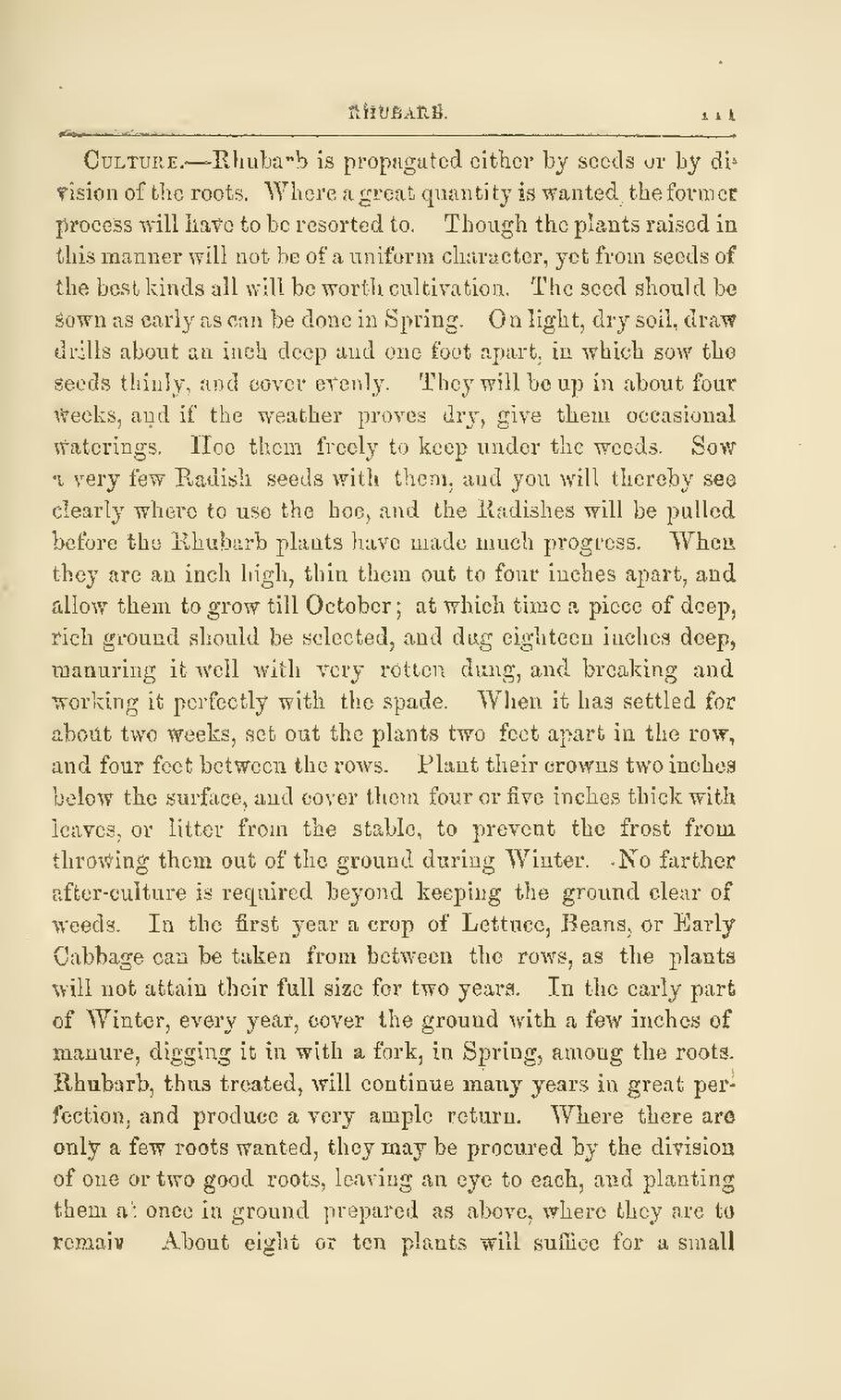Culture.—Rhubarb is propagated either by seeds or by division of the roots. Where a great quantity is wanted, the former process will have to be resorted to. Though the plants raised in this manner will not be of a uniform character, yet from seeds of the best kinds all will be worth cultivation. The seed should be sown as early as can be done in Spring. On light, dry soil, draw drills about an inch deep and one foot apart, in which sow the seeds thinly, and cover evenly. They will be up in about four weeks, and if the weather proves dry, give them occasional waterings. Hoe them freely to keep under the weeds. Sow a very few Radish seeds with them, and you will thereby see clearly where to use the hoe, and the Radishes will be pulled before the Rhubarb plants have made much progress. When they are an inch high, thin them out to four inches apart, and allow them to grow till October; at which time a piece of deep, rich ground should be selected, and dug eighteen inches deep, manuring it well with very rotten dung, and breaking and working it perfectly with the spade. When it has settled for about two weeks, set out the plants two feet apart in the row, and four feet between the rows. Plant their crowns two inches below the surface, and cover them four or five inches thick with leaves, or litter from the stable, to prevent the frost from throwing them out of the ground during Winter. No farther after-culture is required beyond keeping the ground clear of weeds. In the first year a crop of Lettuce, Beans, or Early Cabbage can be taken from between the rows, as the plants will not attain their full size for two years. In the early part of Winter, every year, cover the ground with a few inches of manure, digging it in with a fork, in Spring, among the roots. Rhubarb, thus treated, will continue many years in great perfection, and produce a very ample return. Where there are only a few roots wanted, they may be procured by the division of one or two good roots, leaving an eye to each, and planting them at once in ground prepared as above, where they are to remain About eight or ten plants will suffice for a small
Page:The family kitchen gardener - containing plain and accurate descriptions of all the different species and varieties of culinary vegetables (IA familykitchengar56buis).pdf/117
This page needs to be proofread.
RHUBARB.
111
